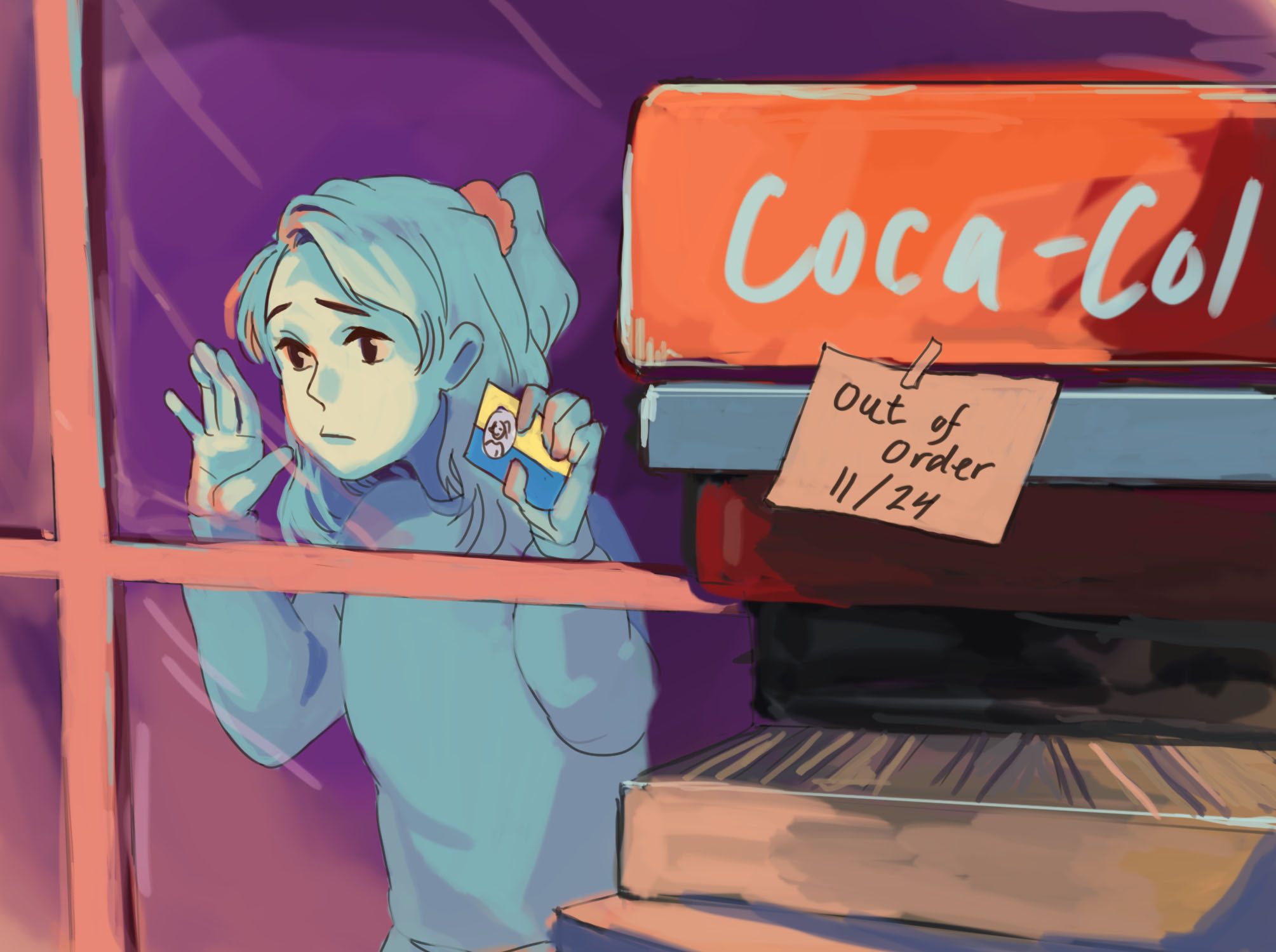Mariah Furtek: UCLA needs to consider programs to help food-insecure students

By Mariah Furtek
Dec. 10, 2017 11:48 p.m.
While some Bruins will spend the weeks after the holidays doing extra sets of crunches in the hopes of getting their jeans to fit again after some scrumptious, festive food, other students will spend their time crunching numbers to see how they’ll afford their next meal.
This lack of guaranteed access to sufficient nutritious food, also known as food insecurity, is a reality for 42 percent of University of California students. A student-run organization called Swipe Out Hunger supports these students by collecting donated meal swipes and working with UCLA Dining Services to convert these swipes into meal vouchers that are valid for use at UCLA dining halls.
Unfortunately, UCLA’s Economic Crisis Response Team, the organization in charge of distributing these meal vouchers to those in need, has a limit on the number of meal vouchers it can distribute. In 2016, the ECRT only distributed about 5,000 meal vouchers even though Swipe Out Hunger collected 13,000 swipes during fall quarter alone, said Eddie Munguia, co-president of Swipe Out Hunger.
Munguia added this cap is due, in part, to the limited amount of financial aid resources UCLA can distribute. The number of meal vouchers a student is given by the university in an academic quarter is restricted to 11, or 20 for undocumented students.
In other words, donated meals are going to waste.
To better support food-insecure students, UCLA Dining Services should partner with Associated Students UCLA to revitalize the Meal Numeration Coupon Program that allows students to trade meal swipes for vouchers they can use at ASUCLA restaurants. The association should work with UCLA to remedy the disparity between the number of swipes donated and the number of usable meal vouchers issued to make food more accessible for food-insecure students.
This ASUCLA meal voucher option could greatly benefit students, especially over breaks, when both the dining halls and the Community Programs Office Food Closet are closed. These closures can be difficult for food-insecure students, as some of them often have to ration smuggled bananas and breakfast cereal over the holidays.
Rachel Sumekh, founder and CEO of Swipe Out Hunger, said Bruin Guardian Scholars, a student organization supporting current and former foster youth, purchased meal vouchers from ASUCLA to distribute to its students over the Thanksgiving break as a solution to the issue of closed dining halls.
UCLA could do something similar to expand the reach of its food security programs. Dining Services could purchase meal vouchers from ASUCLA once the donated swipes exceed the number of meal vouchers ECRT can distribute.
UCLA Housing’s Meal Numeration Coupon Program allows students with meal plans to trade in one of their meal swipes at their building’s front desk for vouchers worth $2.45 at ASUCLA-operated restaurants and $2.15 at third-party restaurants on campus like Jamba Juice and Subway. This dorm coupon program has existed since the 1980s and could be used to fit the needs of today’s food-insecure students.
Obviously, these vouchers are hardly enough to buy even a single meal’s worth of food. UCLA Housing Services should allow students to use multiple vouchers and eliminate the vouchers’ expiration dates. It could donate these coupons to the CPO Food Closet for food-insecure students to use when necessary, in place of the surplus donated meal vouchers that aren’t being used by ECRT.
ASUCLA officials seem on board with such an idea.
“There is already an infrastructure that could facilitate this if the residence halls would be willing to change some of their parameters,” said Cindy Bolton, the food service director for ASUCLA.
Bolton added ASUCLA would be open to working with UCLA Housing to realize this expansion of the existing program.
Swipe Out Hunger is also interested in pursuing such a solution, Munguia said. He added he thinks the onus of addressing food insecurity should be on the university, not on student-led initiatives.
“In five to 10 years, programs like (Swipe Out Hunger) should not have to exist because UCLA and the UC system should already have the infrastructure in place to support all their students,” he said.
That’s not to say UCLA’s existing food insecurity programs are ineffective. Initiatives such as ECRT and the CPO closet can greatly benefit students – as resources permit, however. The fact that not all donated meals are being used means there’s an opportunity for UCLA to improve its food security programs.
Revamping the Meal Numeration Coupon Program is one way to capitalize on that opportunity and make the time during the holidays a bit more bearable for food-insecure students.


